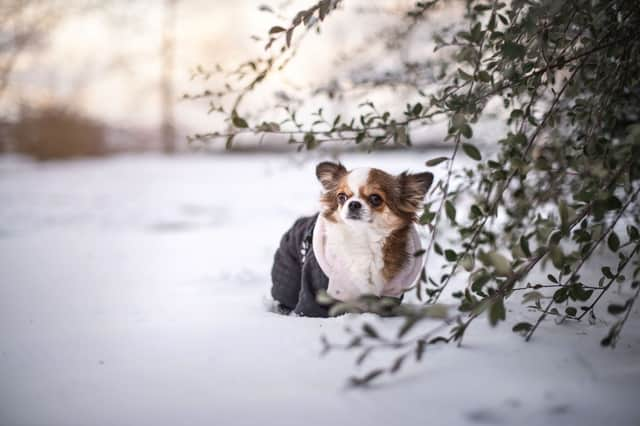Is It Too Cold To Walk The Dog? Here's when you should skip the daily walk, and if it's ok to walk in snow 🐕


The dangers of exercising dogs in hot temperatures and the risk of heatstroke are fairly well known, but many owners are less aware of the impact that cold temperatures can have.
With a long winter ahead of us holiday letting agents Canine Cottages have teamed up with Clinical Animal Behaviourist Rachel Rodgers MCs to offer some top tips on how to keep your pooch warm on winter walks – and when it’s best just to stay inside.
Advertisement
Hide AdAdvertisement
Hide AdCommenting on the tips, a spokesperson at Canine Cottages said: “We often regard dogs as sturdy and robust animals, but even they can get too cold. We encourage all owners to be mindful of their pup this winter, and if ever unsure about your dog’s outdoor adventures, consult a professional.”
Here’s what you need to know.
When is it too cold for your dog to walk?
It’s not uncommon to wake up to temperatures below 0°C in winter. Temperatures around -4°C and below are too cold for short-haired dogs, while long-coated dogs can handle slightly lower temperatures, down to -9°C. Rodgers explains some of the signs to look out for in your dog: “Dogs will shiver when they are cold. Their ears may also feel cold to the touch. Some dogs will look stiff in their movements as they start to feel lethargic and may even have difficulty walking. Behaviourally, you may see your dog stop on their walk, whine or vocalise a little and not want to go any further. In extreme cases, dogs can develop hypothermia if exposed to extreme temperatures for too long. If this happens, the dog will have a rapid drop in body temperature, slower breathing, and potentially be unresponsive and collapse. The dog will need urgent veterinary care and must be warmed up gradually – heat pads / hot water bottles must not be used in these cases.”
Is it OK to walk in the snow?
We all love seeing a fresh sheet of snow on a winter morning, but a layer of snow can also conceal any dangers on the ground.
Rodgers explains what to avoid when walking your dog in the snow: “Try not to let your dog get wet. Even though some dogs, such as Labradors, may love the water and still want to go into lakes and ponds in the winter, it really is better to avoid this to prevent them from struggling with hypothermia. While the dog may seem ok whilst paddling, their body will continue to cool down after they get out of the water, and this can become dangerous. They are also at risk of acute caudal myopathy, also known as limber tail syndrome, where the tail becomes flaccid after having spent too much time in the water.”
Avoid grit salts on your walk
Rodgers also mentions it’s important to avoid grit salt, explaining: “Try to avoid taking walks on roads that cross people’s driveways as homeowners often sprinkle grit on the drive. Heading out to parks or rural locations is safer. If you think your dog has walked in some grit, then make sure you clean their paws thoroughly when you get home and don’t allow them to clean themselves and ingest any of the salts and grit. Some people consider using booties on their dogs’ feet, but many dogs will find this an unpleasant experience and won’t take too kindly to these being put on.”
Evaluate if your dog is ready for cold walks
Rodgers says: “You need to be more careful with very young dogs that have come to a new home at 8/9 weeks old, as well as older dogs. They generally have lower body fat levels and struggle to regulate their body temperature as well as younger adult dogs.”
“Dogs over the age of 8 have an 80% chance of having arthritis and conditions like this worsen when they are cold. There are also health conditions you need to consider, such as diabetes, heart failure and kidney disease. These conditions put dogs at a higher risk so owners will need to take extra care in the colder months. This also applies to dogs with short or no hair.”
Which breeds are most prone to suffering the impacts of cold weather?
Advertisement
Hide AdAdvertisement
Hide AdTake extra precautions with short-haired, smaller dogs such as Chihuahuas, beagles and dachshunds. Larger dogs, such as Great Danes and or Dalmatians, are also prone to getting very cold in harsh winter weather.
Comments
Want to join the conversation? Please or to comment on this article.